Making Water Safe in an Emergency

Use Safe Water
After an emergency such as a water main break, hurricane, or flood, your tap water may not be available or safe to use. In these situations, it’s important to know how to prevent illness from unsafe water.
After an emergency or disaster:
- If you know or suspect your water is unsafe, don’t use that water to drink, wash dishes, brush your teeth, wash and prepare food, wash your hands, make ice, or make baby formula.
- Use bottled, boiled, or treated water for drinking, cooking, and personal hygiene.
- Follow recommendations from your state, local, or tribal health department for boiling or treating water in your area.
- Never use water from radiators or boilers that are part of your home heating system. Learn about places inside and outside of your home where you might find other sources of water that is safe to use.
IMPORTANT: Water that has fuel, toxic chemicals, or radioactive materials in it will not be made safe by boiling or disinfection. Use bottled water or a different source of water if you know or suspect that your water might be contaminated with fuel or toxic chemicals.
If you suspect your water is contaminated with fuel or chemicals, contact your local health department for specific advice.
1. Boil
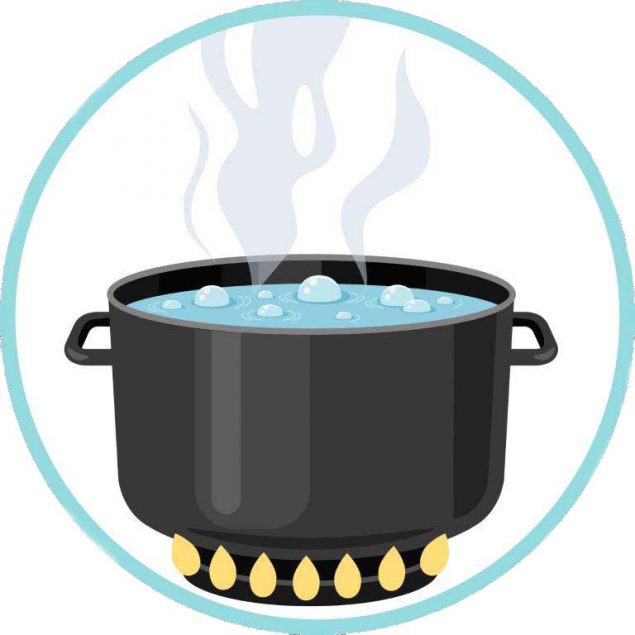
If you don’t have safe bottled water, you should boil your water to make it safe to drink. Boiling is the surest method to kill disease-causing germs, including viruses, bacteria, and parasites.
You can improve the flat taste of boiled water by
- pouring it from one container to another and then allowing it to stand for a few hours, OR
- adding a pinch of salt for each quart or liter of boiled water.
Steps for boiling water:
If the water is cloudy, first filter it through a clean cloth, paper towel, or coffee filter OR allow it to settle. Then, draw off the clear water and follow the steps below.
- Bring the clear water to a rolling boil for 1 minute (at elevations above 6,500 feet, boil for 3 minutes).
- Let the boiled water cool.
- Store the boiled water in clean sanitized containers with tight covers.
2. Disinfect
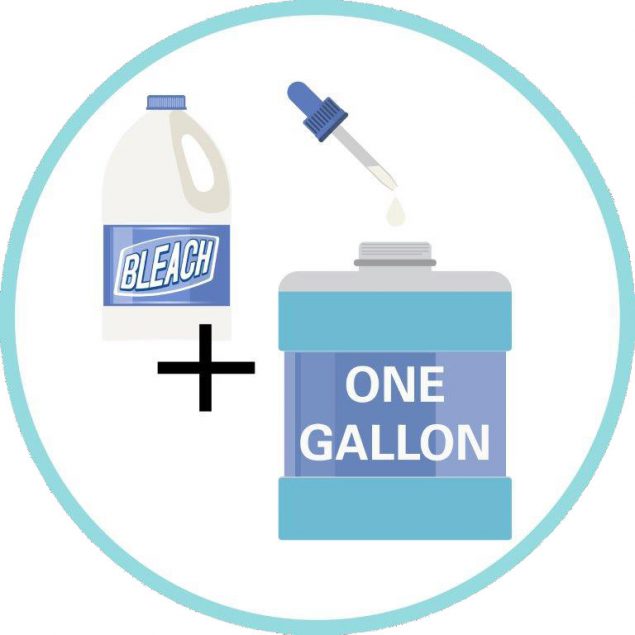
If you don’t have safe bottled water and if boiling is not possible, you can make small quantities of water safer to drink by using a chemical disinfectant, such as unscented household chlorine bleach, iodine, or chlorine dioxide tablets.
Disinfectants can kill most harmful or disease-causing viruses and bacteria, but most disinfectants* are not as effective as boiling for killing more resistant germs, such as the parasites Cryptosporidium and Giardia.
*Chlorine dioxide tablets can kill Cryptosporidium if you follow the manufacturer’s instructions correctly.
If the water has a harmful chemical or radioactive material in it, adding a disinfectant will not make it drinkable.
Using bleach to disinfect water
Bleach comes in different concentrations. Check the label of the bleach you are using to find its concentration before you start to disinfect water. Typically, unscented household liquid chlorine bleach in the United States will be between 5% and 9% sodium hypochlorite, though concentrations can be different in other countries.
Steps for disinfecting water with bleach:
If the water is cloudy, first filter it through a clean cloth, paper towel, or coffee filter OR allow it to settle. Then, draw off the clear water and follow the steps below.
- Follow the instructions on the bleach label for disinfecting drinking water.
- If the label doesn’t have instructions for disinfecting drinking water, check the “active ingredient” on the label to find the sodium hypochlorite percentage. Then use the information in the tables below as a guide. Add the appropriate amount of bleach using a medicine dropper, teaspoon, or metric measure (milliliters).
- Stir the mixture well.
- Let it stand for at least 30 minutes before you drink it.
- Store the disinfected water in clean, sanitized containers with tight covers.
| 1 quart/liter water | 1 gallon water | 5 gallons water |
|---|---|---|
| If you have a dropper: Add 2 drops of bleach |
If you have a dropper: Add 8 drops of bleach |
If you have a dropper: Add 40 drops of bleach |
| If you have something that measures milliliters (mL): Add 0.1 mL of bleach |
If you have something that measures milliliters (mL): Add ½ mL of bleach |
If you have something that measures milliliters (mL): Add 2½ mL of bleach |
| If you have a measuring spoon: Add a tiny amount (too small to measure) |
If you have a measuring spoon: Add a little less than ⅛ teaspoon |
If you have a measuring spoon: Add ½ teaspoon of bleach |
| 1 quart/liter water | 1 gallon water | 5 gallons water |
|---|---|---|
| If you have a dropper: Add 10 drops of bleach |
If you have a dropper: Add 40 drops of bleach |
If you have a dropper: Add 200 drops of bleach |
| If you have something that measures milliliters (mL): Add ½ mL of bleach |
If you have something that measures milliliters (mL): Add 2½ mL of bleach |
If you have something that measures milliliters (mL): Add 12½ mL of bleach |
| If you have a measuring spoon: Add ⅛ teaspoon of bleach |
If you have a measuring spoon: Add ½ teaspoon of bleach |
If you have a measuring spoon: Add 2½ teaspoons of bleach |
Using chemical tablets to disinfect water
If you don’t have safe bottled water, water treatment tablets can be used to disinfect water. These tablets are popular among campers and hikers, as well as in other countries. They are available in different sizes and made to treat specific amounts of water.
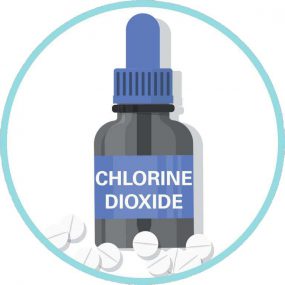
- Follow the manufacturer’s instructions on the label or in the package.
- Chlorine dioxide tablets can kill germs, including Cryptosporidium, if you follow the manufacturer’s instructions correctly.
- Iodine, tablets with iodine (tetraglycine hydroperiodide), or chlorine tablets kill most germs, but not Cryptosporidium. Water that has been disinfected with iodine is NOT recommended for pregnant women, people with thyroid problems, or those with known hypersensitivity to iodine. It’s also not recommended for continuous use—don’t use it for more than a few weeks at a time.
3. Filter
Many portable water filters can remove disease-causing parasites such as Cryptosporidium and Giardia from drinking water.
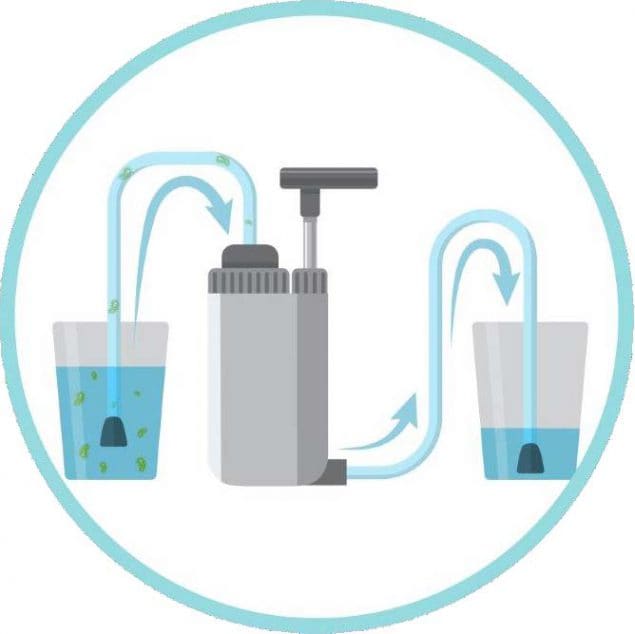
If you are choosing a portable water filter:
- Try to pick one that has a filter pore size small enough (absolute pore size of 1 micron or smaller) to remove parasites, such as Giardia and Cryptosporidium. Portable water filters do not remove viruses, and most portable filters do not remove bacteria either.
- Carefully read and follow the manufacturer’s instructions for the water filter you are using.
- After filtering, add a disinfectant such as iodine, chlorine, or chlorine dioxide to the filtered water to kill any viruses and bacteria.
For more information about water filters that can remove parasites, see CDC’s A Guide to Water Filters.
Ultraviolet Light (UV Light)
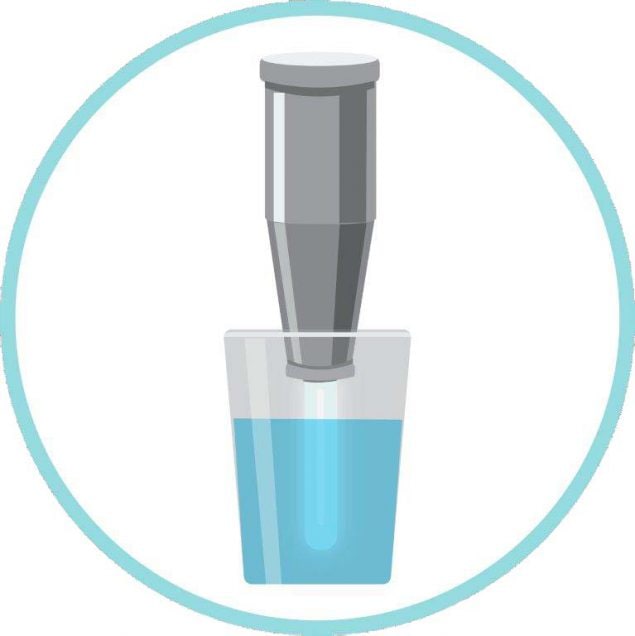
- Ultraviolet light (UV light) can be used to kill some germs.
- Portable units that deliver a measured dose of UV light help disinfect small amounts of clear water. UV light does not work well on cloudy water because small particles may block germs from the light.
- If the water is cloudy, first filter it through a clean cloth, paper towel, or coffee filter OR allow it to settle. Then, draw off the clear water and disinfect it using the UV light.
- Always follow the manufacturer’s instructions.
Solar Disinfection
- In emergencies, the sun’s rays can improve the quality of water. This method may reduce some germs in the water.
- To disinfect water using the sun:
- Fill clean and clear plastic bottles with clear water. Solar disinfection is not as effective on cloudy water because small particles may block germs from the light.
- If the water is cloudy, first filter it through a clean cloth, paper towel, or coffee filter OR allow it to settle. Then, draw off the clear water and disinfect that water using the sun.
- Lay the bottles down on their side and in the sun for 6 hours (if sunny) or 2 days (if cloudy). Laying down the bottles allows the sun’s rays to disinfect the water inside more effectively.
- Putting the bottles on a dark surface will also help the sun’s rays disinfect the water more effectively.
- Fill clean and clear plastic bottles with clear water. Solar disinfection is not as effective on cloudy water because small particles may block germs from the light.
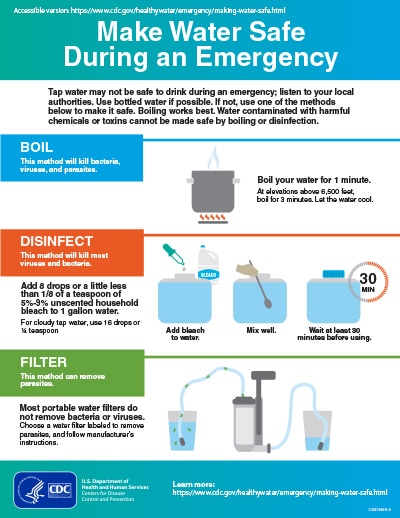
Make Water Safe During an Emergency [PDF – 625 KB] (English)
Haga que el agua sea segura durante una emergencia [PDF – 627 KB] (Español)
Xử Lý Nước An Toàn Trong Tình Trạng Khẩn Cấp [PDF – 737 KB] (Vietnamese)
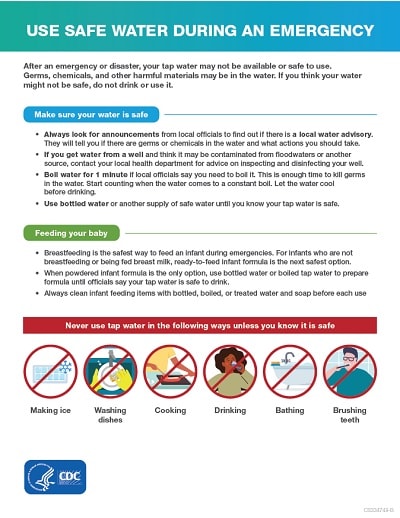
Use Safe Water During an Emergency [PDF – 1 page] (English)
Beba agua que sea segura [PDF – 1 página] (Español)
- Infant and Young Child Feeding in Emergencies (IYCF-E) Toolkit | Nutrition | CDC
- Water Treatment Options When Hiking, Camping or Traveling
- Drinking Water
- Commercially Bottled Water
- Avoid Contaminated Water During Travel
- Water Disinfection – Chapter 2 – 2020 Yellow Book
- Food, Water, Sanitation, and Hygiene
- Disinfecting Wells After a Disaster
- EPA: Emergency Disinfection of Drinking Water
- EPA: Safe Drinking Water Information